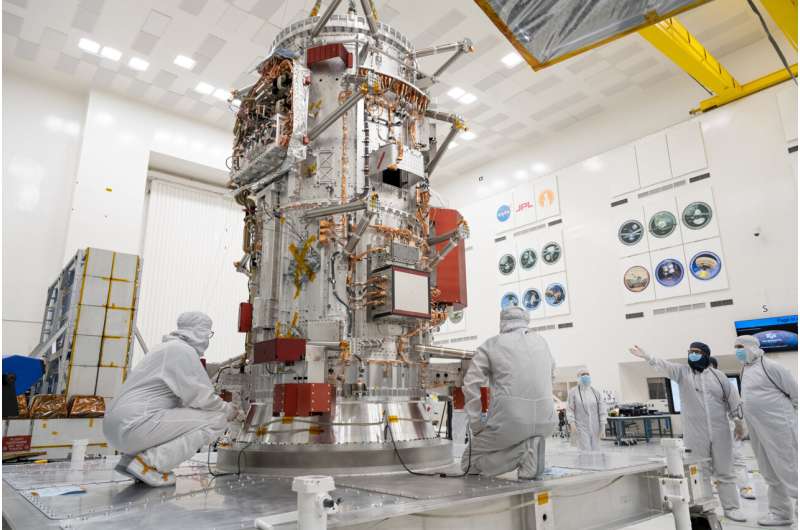Several of Europa Clipper's science instruments already have been completed and will be installed on the spacecraft at JPL. Most recently, the plasma-detection instrument, called the Plasma Instrument for Magnetic Sounding, and the Europa Imaging System wide-angle camera arrived from the Johns Hopkins Applied Physics Laboratory (APL), in Laurel, Maryland. The thermal-emission imaging instrument, called E-THEMIS, and the ultraviolet spectrograph, Europa-UVS, have already been installed on the spacecraft's nadir deck, which will support many of the instrument sensors by stabilizing them to ensure they are oriented correctly.
Fabricated at JPL, this key piece of hardware will soon move into the Spacecraft Assembly Facility's High Bay 1, the same clean room where historic missions such as Galileo, Cassini, and all of NASA's Mars rovers were built.
Also moving soon to High Bay 1 will be the aluminum electronics vault, which will be bolted to the main body of the spacecraft, protecting the electronics inside from Jupiter's intense radiation. The electronics enable Europa Clipper's computer to communicate with the spacecraft's antennae, science instruments, and the subsystems that will keep them alive.
Bright copper cabling snaking around the orbiter's aluminum core contains thousands of wires and connectors handcrafted at APL. If placed end to end, the cabling would stretch almost 2,100 feet (640 meters)—enough to wrap around a U.S. football field twice.
Inside the core are Europa Clipper's two propulsion tanks. The fuel and oxidizer they'll hold will flow to an array of 24 engines, where they will create a controlled chemical reaction to produce thrust in deep space.
By the end of 2022, most of the flight hardware and the remainder of the science instruments are expected to be complete. Then, the next steps will be a wide variety of tests as the spacecraft moves toward its 2024 launch period. After traveling for nearly six years and over 1.8 billion miles (2.9 billion kilometers), it will achieve orbit around Jupiter in 2030.
Missions such as Europa Clipper contribute to the field of astrobiology, the interdisciplinary research field that studies the conditions of distant worlds that could harbor life as we know it. While Europa Clipper is not a life-detection mission, it will conduct a detailed exploration of Europa and investigate whether the icy moon, with its subsurface ocean, has the capability to support life. Understanding Europa's habitability will help scientists better understand how life developed on Earth and the potential for finding life beyond our planet.



